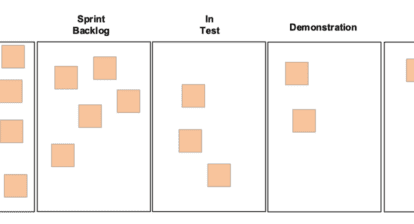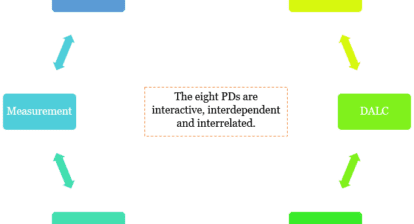Project Management Institute’s (PMI®) Professional in Business Analysis (PBA®) is relatively a new certification as compared to others. Though young, it is one of the fastest growing areas of certification. As of June 2018, over 2,650 professionals hold PBA certification globally.
Business analysis is increasingly considered to be an important area of competency needed by project managers. In my interactions with management professionals, I find many PMPs also want to increase their understanding of business analysis. Many are pursuing a certification in this area. Another driving factor is inaccurate requirement gathering. In PMI®’s pulse of the profession report 2018, 35% respondents reported inaccurate requirements gathering as the primary cause of project failure. This, in turn, is a major reason for scope creep, and shows the need for project managers to have more knowledge of business analysis.
The PMI-PBA® certification holds good value mainly due to the following facts.
- It is coming from PMI®, a well-recognized and credible body globally within the management and business-analyst community.
- Unlike many other certifications, which can be easily done in few days or with little to no effort or learning, the PBA certification takes real effort to earn.
- It is well-structured, well-administered, tested professionally, and recognized within the management community.
- The PBA certification helps hiring managers in many aspects as the examination checks if the aspirant has sound understanding, knowledge, and experience in applying business principles, practices, tools, and techniques.
- The practices, tools, and techniques in business analysis are evolving, and along with them, the reference material published by PMI®. The certification meets the current practices in business analysis domain.
Recently, the PBA exam has changed and it is now in alignment with terminologies used in the PMI® Guide to Business Analysis (PMI-BA Guide), which was published in December 2017. This guide also includes the standard for business analysis. Other than this guide, there are other reference guides such as A Guide to the Project Management Body of Knowledge (PMI-PMBOK® Guide), Business Analysis for Practitioners – A Practice Guide (PMI-BA® Practice Guide) and books.
However, going forward, I’ll be using the PMI-BA® Guide (not the BA Practice Guide or PMBOK® Guide) mostly as a reference for understanding in this article. The other two guides are important ones to know and read, but I’ve used the PMI-BA® guide primarily here to keep it simple.
PMI-PBA® Exam Prerequisites
To be eligible for the exam, PMI® considers education – degree or diploma, experience in business analysis, general project experience, and formal contact hours of training. To earn the credential, you need to have all of them. The table below shows the prerequisites for the exam.
| Secondary Degree (High school diploma or associate degree or global equivalent) | Bachelor’s degree or higher degree (or global equivalent) | |
|---|---|---|
| Business Analysis Experience | 7,500 hours (5 years) working as business analysis practitioner. | 4,500 hours (3 years) working as business analysis practitioner. |
| General Project Experience | 2,000 hours working on project teams. This experience can be inclusive of the 7,500 hours of business analysis experience, provided it occurred within a project context. | 2,000 hours working on project teams. This experience can be inclusive of the 4,500 hours of business analysis experience, provided it occurred within a project context. |
| Training in Business Analysis | 35 contact hours of learning The hours must be earned in business analysis practices. | 35 contact hours of learning The hours must be earned in business analysis practices. |
PMI-PBA® Exam Pattern
The PMI-PBA® exam is primarily based on the Exam Content Outline, popularly called ECO in short. The ECO explains the exam topics to be covered, the domains a participant will be tested upon, the tasks under these domains, knowledge and skills needed, and which percentage of questions will come from which domain.
The ECO has five domains, which are described in the following table:
| Areas | Brief Description | What They Do? |
|---|---|---|
| Domains (Total 5) | A domain informs about a set of tasks (or activities) a business analyst (BA) is expected to perform. The five performance domains are: • Needs Assessment (NA) • Planning (PL) • Analysis (AN) • Traceability and Monitoring (TE) • Evaluation (EV) | Domains are the areas on which you will be primarily tested upon. Exam questions are segregated on these domains and the associated tasks. |
In the PMI-BA® guide, these domains are mapped into six process groups (PGs) and six knowledge areas (KAs). A process group, as the name tells, is a logical grouping of processes. The PGs indicate when the processes are used. In total, we have 35 processes across six PGs.
- Defining and Aligning – 8 processes
- Initiating – 1 process
- Planning – 7 processes
- Executing – 15 processes
- Monitoring and Controlling – 3 processes
- Releasing – 1 process
The knowledge areas, on the other hand, focuses on why the processes are used. A knowledge area is a field of specialization commonly used while conducting business analysis. The KAs are:
- Needs Assessment – 7 processes
- Stakeholder Engagement – 7 processes
- Elicitation – 4 processes
- Analysis – 9 processes
- Traceability and Monitoring – 4 processes
- Solution Evaluation – 4 processes
The 35 processes are spread across the KAs as well. For example, a process named ‘Assemble Business Case’ is part of Defining and Aligning PG, as well as the Needs Assessment KA. A process named ‘Support Charter Development’ is part of Initiating PG and also the Needs Assessment KA.
Details on PMI-PBA® Exam
The PBA examination has 200 questions in total. The time given to take the exam is four hours or 240 minutes. For every question, you will get 72 seconds or just over a minute.
| Questions | Total |
|---|---|
| Number of Scored Questions | 175 |
| Number of Unscored Questions | 25 |
| Total Number of Questions | 200 |
| Total Exam Duration | 4 hours |
Out of 200 questions, 175 questions will be scored and 25 will be unscored. The 25 questions are not considered for your evaluation. They are included to check the validity, difficulty of the questions, etc. The questions given in the exam are from a question data bank. There is no negative marking. When taking the exam, one should attempt all 200 questions.
Both computer-based testing (CBT) and paper-based testing (PBT) are allowed. I would suggest that you go for the CBT. The exam score will be available upon exam completion, and it is more convenient.
Each domain will be given a rating, along with main report of PASS/FAIL. There are four performance rating categories for the five domains. This replaces the earlier proficiency levels. The performance rating categories are explained below.
- Above Target: Your performance exceeds the minimum requirements for this exam.
- Target: Your performance meets the minimum requirements for this exam.
- Below Target: Your performance is slightly below target and fails to meet the minimum requirements for this exam. Additional preparation is recommended before re-examination.
- Needs Improvement: Your performance is far below target and fails to meet the minimum requirements for this exam. Additional preparation is strongly recommended before re-examination.
The targets are expressed in ranges, which helps you to see how you scored in the exam with respect to the performance domains. Graphically, a sample is shown as below.
The exam report will contain a rating for each performance domain. For example, “Above Target” in “Needs Assessment,” “Target” in “Planning,” and so on. The overall performance (Pass or Fail) is shown on top your exam report. See the figure above. Each question answered correctly is worth 1 point. Your final score will be the total of all scored points. Based on the final scored points, you will be put into one of the aforementioned performance rating categories.
Your individual ratings on the performance domains will look something like what is shown below.
For every domain, the performance will be further analyzed for the associated tasks.
The cost details for the exam are as follows:
- For a PMI® member, US$405. For a Non-PMI® member, US$555.
- You can take three re-exams, including the 1st attempt, in case you are unsuccessful the first time. The re-examination fee is US$275 for a PMI®-member and US$375 for a non-member.
PMI-PBA® Exam Blueprint
Below are the topic areas or domains, with percentage of questions expected from each domain:
| Domain | Percentage of Questions | Number of Questions |
|---|---|---|
| Domain – 1: Needs Assessment | 18% | 36 |
| Domain – 2: Planning | 22% | 44 |
| Domain – 3: Analysis | 35% | 70 |
| Domain – 4: Traceability and Monitoring | 15% | 40 |
| Domain – 5: Evaluation | 10% | 20 |
| Total | 100% | 200 |
The approximate number of questions from each performance domain is shown in the right column. You can expect a few variations.
PMI-PBA® Exam Process
The entire certification process is outlined in the figure below:
Once you post your application submission, an application completeness review will be done, followed by the audit process. The process for audit changed last year. As shown above, the audit (Step – 3) happens before you make the payment (Step – 4). Earlier it was after. An audit is done randomly on some applications. The timeframe for audit is 90 days or 3 months. Post audit, you will be allowed to sit in the exam. If your application is not audited, then PMI® will confirm you are ready to sit in the exam. This happens in a few days.
From the date of approval (if audited, approval will occur after the audit is done), you have a one-year window to appear in the exam. For example, say your application was approved on October 10, 2018, you will have from October 10, 2018 to October 10, 2019 to sit in the exam.
You need to have the required 60 professional development units (PDUs) in three years after your certification to continue with it. One hour of learning, content creation, or instruction etc., equals one PDU.
If you do not fulfill the PDU requirement, , your certification will expire, and you would have to reappear in the exam.
If you have the 60 PDUs and you have renewed, your certification will extend for an additional three years. The fee to renew is US$60 for PMI® members and US$150 for non-members.
Continuing Your PMI-PBA® Certification
The requirement to accumulate 60 PDU’s after you get your PMI-PBA® credential, is required to maintain your certification. This is mandated by PMI® and is called continuing certification requirement (CCR). At a high level, your PDUs should be within two categories.
The Education Category PDUs are segregated into the arms of the PMI® Talent Triangle, which is depicted below.
You need to have at least eight PDUs in each arm of the triangle.
- Technical Project Management (at least 8 PDUs)
- Power Skills (at least 8 PDUs)
- Strategic and Business Management (at least 8 PDUs)
Together, in the Education category, you need to have a minimum of 35 PDUs.
The Giving Back category is sub-divided into three areas.
- Volunteering
- Creating knowledge
- Working as a Professional (maximum 8 PDUs)
Together, in the Giving Back category, you can have a maximum of 25 PDUs.
Filling Your PMI-PBA® Application Form
PMI® documents that candidates for PMI-PBA® certification must display the following:
- Perform their duties under general supervision and be responsible for working with stakeholders to define an organization’s business requirements in order to shape the output of projects and ensure they deliver the expected business benefit.
- Spearhead the discovery, analysis, and overall management of the requirements for a project.
- Demonstrate sufficient knowledge and experience to appropriately apply business analysis tools and techniques to enable project success.
A few generic guidelines while filling in your application forms is noted below.
- After you have started your online application process, you can’t cancel it. The application will remain open for 90 days, after which it will expire. After you begin on it, don’t postpone.
- Your experience in projects should cover a period of three years for bachelor’s degree holders, or over a period of five years for diploma/high-school certificate holders. All these experiences should have been accrued in last eight years prior to your application submission.
- No experiences should be overlapping. For example, if you have two projects, A and B, and Project A is running from January 2018 to June 2018 with Project B is running from January 2018 to March 2018, there is an overlapping of three months. You can’t show both while filing your application form. In this case, you could show only Project A running from January 2018 to June 2018.
- You can do both business analysis work and project work in the same project. In other words, your business analysis experience can count towards your general project experience if it occurred in a project. If you are already a Project Management Professional (PMP) and your certification for that is in active status, the project experience section need not be filled out. This is essentially because during the PMP application process, this experience was already verified.
- You need not mention each and every project that you have worked on. Rather, try to include the latest projects that you have worked on. If they were done a few years earlier, go ahead and include those projects.
- When explaining your project work, don’t directly cut-paste PMI® words from the reference guides and/or books. Rather, inform on what you did. In your business application area, the language and terms may have been different. You will do well to use your own words.
- Try to estimate your work hours (either 4,500 or 7,500) offline in an Excel sheet. Once you have them outlined, then fill out the online form.
If you are aspiring to be a PBA, I hope this article will guide in your preparation for the examination.
References:
[1] The PMI® Guide to Business Analysis, by Project Management Institute (PMI®)
[2] PMI® Professional in Business Analysis – Examination Content Outline
[3] PMI® Professional in Business Analysis Handbook
[4] PMI® Pulse of the Profession, 2018, Success in Disruptive Times
[5] Business Analysis for Practitioners: A Practice Guide by Project Management Institute (PMI®)












Satya Narayan Dash
Hi Deb,
With PBA, you will have sound coverage and understanding. Don’t know much about IIBA.
The new BA guide published is well organized – with knowledge areas, process groups, processes.
Another aspect is this: you can pursue other areas such as agile management (e.g. ACP), risk management (e.g. RMP), project/program/portfolio management etc. with your familiarity with PMI-PBA.
Go with the one which gives you the highest value – learning, professional growth and applicability on a long term basis.